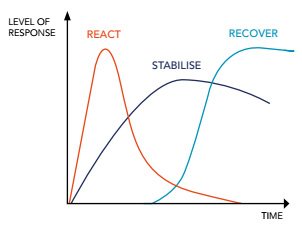Introduction
Note on the methodology principles
All the points listed are the result of a 10-month work during Explore phase with all 11 cities involved in the project. They represent what we consider is the most adapted way to advance through phases 2 & 3 considering the highly uncertain times we are facing (world pandemic, economic recession, climate change).
They equally built on the values, expertise and tools provided by the URBACT (https://urbact.eu/) projects and their 15+ years work with more than 1000 cities in Europe. The support and knowledge provided by URBACT are at the core of ASToN and represent a continuous reference for our work. Last but not least, they stem from on a shared vision of participation, co-creation and digital transformations as tools for designing the cities of tomorrow as inclusive and sustainable places to live, work and play.
In this section of the baseline study, we build on the conclusions in the Synthesis and outline our approach and methodology for Phases 2 & 3 of the ASToN project.
The overall aim of Phases 2 & 3 is to improve the capacity of local authorities to lead digital transformation and innovation processes for their territory. By improving the capability of city authorities, we aim to have an impact on the quality of public services, the relations between the local authority and the local stakeholders as well as with the citizens.
This is done through a combination of local level and network level activities.
At LOCAL level we aim to:
• create a local dynamic via Local Action Group • frame the problem well
• develop a Local Action Plan
• test solutions and learn from the process
At NETWORK level we aim to:
• create a strong network of African cities supporting and learning from each other
• build capacity amongst local teams to confidently use digital tools and technology
• share the results and lessons from ASToN
A note on COVID-19
The global pandemic has brought a time of uncertainty and disruption for everyone in the ASToN network. The methodology is sensitive to shifting priorities and needs, and we recognise that not every city will be at the same level of response at the same time.
COVID-19 has awlso set in motion a huge shift in the way we interact, communicate, learn, and share. There is an opportunity to accelerate the pace at which we build communities virtually, in a way that is catalytic and human.
We will continue to assess the situation and work together to understand the best ways to continue the work. Throughout this document, we have noted the difference between how things are delivered if the lockdown and COVID-19 related disruption continues and if it does not.
You can read more about ASToN cities’ response and reflections on COVID-19 here.

REACT: immediate response and action required to stop the spread of the virus and enforce confinement
STABILISE: considering how to deliver vital ser- vices to citizens as confinement continues
RECOVER: easing of restrictions and action focused on adjusting to the new environment and effect


